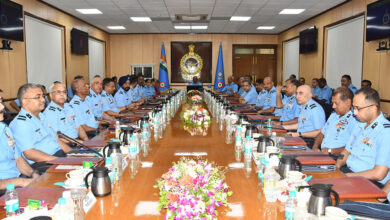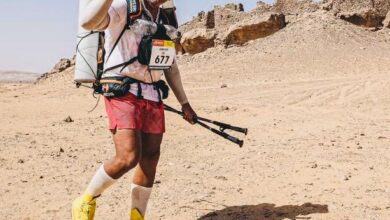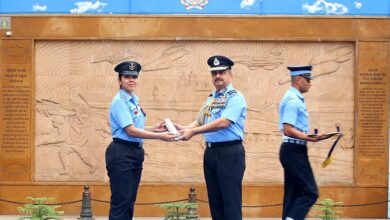Indian Armed Forces
New Delhi. The welcome news that Defence Acquisition Council (DAC) of the Ministry of Defence (MOD) had, in its meeting on 25 June 2016, finally cleared the purchase of 145 Ultra Light Howitzers (ULH) from the US for the Indian Army should gladden the hearts of all those concerned with the Army’s modernisation. Particularly, the Indian Artillery, which acquitted itself excellently during the 1999 Kargil war against Pakistan, and has been eagerly looking forward to adding this versatile weapon system to their arsenal.
After all, it would be the first modern gun system which would be imported after a long gap of 30 years, post the now infamous Bofors acquisition in 1986. To be sure, whatever the political controversy involving Bofors, the weapon performed admirably in the battles of Kargil, enabling us to achieve victory despite seemingly insurmountable odds.
To get back to ULH acquisition, the case started as early as in 2008. Since the ghosts of Bofors had not been exorcised even till then, it was proposed that the ULH, be acquired through the Foreign Military Sales (FMS) route, a methodology wherein government to government transaction takes place, obviating the necessity of dealing with foreign private enterprises and their middlemen for weapon acquisitions, thus foreclosing the option of being blamed for corruption. Incidentally, the ULH is also a descendent of the Bofors weapon system.
What is a matter of concern is that even while following the FMS route, the acquisition of this precious and badly needed weapon system would have taken more than 10 years to be inducted into the Indian Artillery. And worse, even fast track procurements are not being acquired in the stipulated time frame! A sad commentary on our procurement methodology!!
Nonetheless, the jinx of the 1980s has gone, opening the doors hopefully for modernisation of the armed forces with appropriate speed in routine.
There have been similar stories scripted in other weapon acquisitions, and the increasing hollowness in all the three Services, viz Army, Navy and Air Force should be a matter of worry for all those connected with national security of the country. Let us examine the state of modernisation of the three services in a little greater detail.
Army
There are three major areas which need urgent attention. These are mobility, night fighting capability and higher technology absorption. Different components of the Army which can significantly enhance its combat potential in all these areas specifically are:
(a)Infantry. The flagship project of the infantry i.e. Infantry Soldier As a System (INSAS) to make the soldier a cohesive and fully integrated fighting machine capable of operating equally efficiently during day and night is nowhere near completion. Basic weapons like assault rifles and carbines are deficient to the tune of about 200,000 and 160,000 respectively. Cases taken up during the last six years to procure these through import have either been scrapped or abandoned leaving a degree of hollowness in the infantry. Communication and surveillance equipment, night vision devices and even bullet proof jackets are deficient affecting combat efficiency.
(b) Mechanised Forces. Barring T-90 tanks, all other tanks are gradually nearing obsolescence and require constant up-gradation and life extension. The night fighting capability of T-72 tanks is sought to be upgraded by fitting them with Thermal Imaging Stand Alone Sights (TISAS). Additionally, the tanks are also being fitted with explosive reactive armour (ERA) panels and laser warning systems to improve their fighting efficiency. However, the entire programme is way behind schedule. The Arjun Mark 1 tank which was indigenously produced by DRDO after a prolonged delay still requires 80-90 improvements before the Army will accept additional 124 of these. To improve firepower, the Army plans to acquire 25,000 invar missiles both through import (10,000) and indigenous manufacture (15,000). To keep the mechanised infantry compatible with the tank mobility, the entire fleet of infantry combat vehicles (ICVs) is sought to be upgraded but once again the programme is suffering from major slippages.
(c) Artillery. Besides the case 145 ULHs, another major project to acquire 1580 nos. of 155 mm calibre towed guns (both through import and indigenous manufacture) has been in the pipeline for the past 10 years and is yet to see the light of the day. Likewise, mounted gun system (MGS) and self propelled (SP) gun systems are nowhere near acquisition yet. As a result, the artillery modernisation is way behind schedule. Perhaps the only silver lining is the successful trial of the indigenously produced 45 calibre ‘Dhanush’ gun system, a joint effort of the Ordnance Factory Board (OFB) and DRDO based on the Bofors gun, which had come with full Transfer of Technology (TOT) in the 1986 deal. Once productionised, it would give a tremendous push to indigenisation and ‘Make in India’ effort.
(d) Air Defence Artillery (ADA). Most of the equipment held by the ADA is obsolete. Tangushka and Kvadrat weapon systems have outlived their utility. Upgrading of vintage gun systems like L70, ZU-23-2, ZU-23-4, Schilka etc. is likely to provide short term relief. DRDO’s Akash weapon system is only suitable for static role. This leaves us with little choice but to import state of the art AD systems for close defence of VAs and VPs. As things stand, the progress so far has been excruciatingly slow, which does not bode well for air defence of our precious assets.
Navy
Relatively speaking, the Indian Navy’s progress towards indigenisation has been much faster than the other two Services. With the push being given to ‘Make in India’ by the present dispensation, naval efforts towards modernisation through the indigenous route have been given a boost. However, with the Indo-Pacific Ocean zone becoming a hot area of future power play, precious time has already been lost in preparing for this scenario. The Chinese development of maritime silk route, pursuing the ‘String of Pearls’ strategy vis-a-vis India along with acquisition of Gwadar port from Pakistan places us at a major disadvantage. The current hollowness in the Navy may yet take a long time to overcome even through the indigenisation route. Let us look at some areas of major concern:
(a) Nuclear Submarines. INS Arihant was launched in July 2009 and its reactor achieved nuclear criticality in August 2013. However, three years down the line today, it has yet to become a nuclear armed submarine. The only other nuclear propelled but not nuclear armed submarine that we have is INS Chakra, on lease from Russia. Thus, in this field we have a lot of catching up to do, particularly with China, if we wish to play a significant role in the Indian Ocean and its neighbourhood.
(b) Conventional Submarines. Currently, the Indian Navy is down to just 13 ageing conventional submarines. Of these, six are being upgraded as part of Rs 4800 crores upgrade programme which was approved by the Government in August 2014. The Scorpene project for acquiring six submarines from France at a cost of Rs 23,562 crores has been overly delayed, necessitating up-gradation of older submarines. The first of the six Scorpenes will be delivered by December this year and the last one by 2020. Additionally, the Navy is looking forward to acquiring six state of the art conventional submarines with high stealth features, Air Independent Propulsion (AIP) and advanced weapons and sensors (Project-75(I). This project also has a long way to go.
(c) Aircrft Carriers. An aircraft carrier is an expression of a nation’s efforts to acquire a blue water capability. Non-possession of a carrier prior to induction of INS Vikrmaditya (Gorshkov in the Russian avatar) left the Navy with a sense of vulnerability and inadequacy. Post its induction, one can perceive a renewed sense of confidence in all its actions. Additionally, INS Vikrant is being indigenously built to ensure a carrier capability both on the western and eastern seaboards of India. The Navy’s vision also includes a third aircraft carrier which it wants available to replace when one of the other two goes for rest and refit. Hopefully, that plan fructifies before 2030 as the Navy desires.
(d) Ships. A series of recent accidents involving both the submarines and ships confirm the vulnerability of the Indian Navy’s ageing fleet. To compound matters, our shipyards have not been able to rise to the occasion to provide timely replacements which is a clear indication of the existing hollowness.
(e) Surveillance and Anti Submarine Warfare capability. In 2008, India had contracted for eight P81 Long Range Maritime Patrol aircraft from the US at a cost of $2.1 billion. Now the Cabinet Committee on Security (CCS) has cleared a further purchase of four aircraft from the US at a cost of over $1 billion. This should significantly enhance the Navy’s capability of monitoring the happenings in the Indian Ocean. The Navy does need more assets though, for which plans are with the Government.
Air Force
(a). Combat Jets, The Indian Air Force is down to just 33 squadrons against a requirement of 42, forcing Prime Minister Narendra Modi to negotiate a government to government deal during his visit to France in 2015 for 36 Rafale jets in flyaway condition. The paperwork for this deal has not been finalised one year after the visit for deliveries to commence. The delivery process itself will take another few years to be completed.
IAF needs a significant number of new combat jets besides the 36 Rafales, as the 2007 programme to acquire 126 Medium Multi Role Combat Aircraft (MMRCA) with 63 as option has been scrapped. That requirement has apparently increased.
On July 1, 2016, IAF inducted the first two of indigenously developed and built Light Combat Aircraft (LCA) Tejas. It has taken the DRDO and HAL 33 years to produce it, not to talk of the cost overruns. Such long development periods are hardly acceptable for any military, and cast doubts on the ability of the ‘Make in India’ policy to deliver. Due attention is also required for stealth aircraft, for which India has been in talks with Russia for nearly a decade now.
(b). Transport Aircraft. On the transport side, the IAF has done well. Starting with the acquisition of six C-130J Super Hercules aircraft in 2007, it followed up with the purchase of ten C-17 Globemaster III strategic lift aircraft in 2011, both from the US. In 2013, it purchased a further six C-130Js.
(c). Helicopters. In 2015, IAF inked agreements with the US for 22 Apache AH64E Attack and 15 Chinook CH47 Heavy Lift helicopters. Additionally, it is acquiring 135 Mi-17V5 helicopters from Russia. The reconnaissance and surveillance helicopter (RSH) for both the Army and the Air Force however still remains a deficiency. The Government is in discussions with the Russian side for setting up a facility for production of Kamov helicopters in India. If approved, 60 of these would be purchased from Russia in flyaway condition and 140 would be manufactured in India indigenously.
Conclusion
The hollowness in all the three services is substantial, and what is worse, it is gradually increasing. Faced with the possibility of a two-front threat, our capability development and pace of modernisation is way behind schedule. At a time when we are striving for double digit growth in our economy, we need a stable and peaceful environment which can only be guaranteed by a strong military.
The ‘Make in India’ policy being pursued by the Government is a step in the right direction and should have been undertaken immediately post-Independence. However, for it to now fully fructify, a gestation period of 10-15 years is required. In the meanwhile, the existing hollowness in the three Services needs to be urgently addressed.
The enhancement of defence budget to three per cent of the GDP, greater participation of indigenous private sector in defence equipment manufacturing and thorough revamping of OFB, defence PSUs and DRDO with focus on defence modernisation are essential first steps towards speeding reforms in national interest.
The author is former Chief of the Army Staff.





